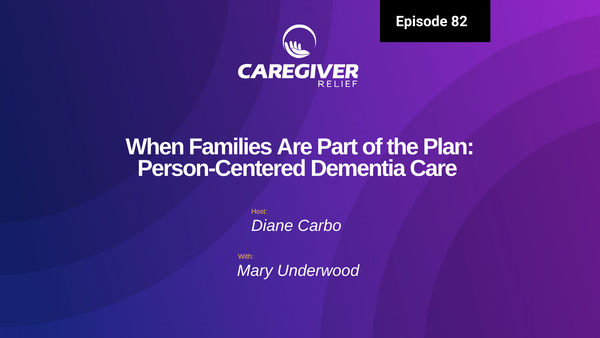How Many Hours of Respite Care are You Allowed?

Introduction to Respite Care
Respite care is a form of care that is provided for people who need assistance on a temporary basis. It can allow family members and primary caregivers a much needed break from the daily demands of providing care for someone in their charge. It can also provide ongoing care for those who require more specialized assistance.
The primary goal of respite care is to provide temporary relief for families and primary caregivers who may be in need of assistance or some time away from their duties. Respite care allows them to take a break from their responsibilities, allowing them to relax, regroup, and recharge. It can also provide essential services for those with special needs, such as those who need around-the-clock care.
The type of respite care you choose will depend on your unique situation and the individual's specific needs. There are a variety of respite care options available including home care services, day programs, residential centers, respite retreats, and even overnight stays in hospitals or nursing homes.
When considering respite care, it is important to understand that there are eligibility requirements which must be met before you can receive the care you need. It is also important to understand how much care you are allowed to receive and what types of services are available.
This video discusses respite care
Introduction to Respite Care
Respite care is an important service that provides support for families and caregivers of individuals with special needs. It provides a break for them from the ongoing demands of providing care. Respite care can include home care services, in-home services such as respite care workers, or even providing access to specialized programs and services. It is important to understand that respite care is not a substitute for full-time care; rather, it is a form of short-term relief.
Respite care can be used to allow caregivers to attend to personal matters, to take a break from stress or for family members to have some quality time together. It can also provide access to specialized services that may not be available in the home or available through government programs. Respite care can be an invaluable tool for those who need it and can help to ensure that family members are healthy and able to continue providing quality care.
Why You Might Need Respite Care
Respite care is necessary for when you or someone you care for need a break or some additional support due to a physical, mental or emotional illness or disability. It can be a great way to provide temporary relief and support for a primary caregiver. It may also be necessary if a caregiver finds themselves in a difficult situation that puts them and/or the person they are caring for at risk.
For instance, respite care may be needed if a primary caregiver needs to go on vacation, is dealing with a serious illness themselves, or has experienced an injury. Respite care can also be beneficial as it allows the caregiver to have a break without feeling guilty, as well as potentially giving them time to focus on self-care or spend time with other family members.
Explaining Eligibility Requirements for Respite Care Services
If you require respite care, it is essential to understand its eligibility requirements. All eligible individuals who wish to receive respite care services must meet certain criteria set by the local authority in order to qualify. Knowing this criteria ahead of time can help make the process smoother and ensure that you get the best quality of care available.
The key criteria to determine if you are eligible for respite care is based on your current level of care needs. This is assessed using a needs assessment process, which must be completed before any respite services are provided. The assessment will include questions about your current physical and mental health, daily activities, lifestyle choices, and so on. This evaluation helps to determine if respite care is appropriate for you or not.
In addition to your level of care needs, other factors will also be taken into consideration when determining if you are eligible for respite care. These include your current living situation, any existing support networks, and financial resources. Your local authority may also consider any medical or social history that could affect your eligibility.
Once the assessment has been completed and your eligibility determined, you will be able to access the respite care services that you need. It is important to remember that respite care services are only meant to be a short-term solution and not a replacement for regular care.
Who Qualifies for Respite Care Services?
The definition of who may qualify for respite care services is not always the same for each care provider. Some providers may be open to offering respite care services to individuals with any level of disability, while others may require a certain degree of need in order to qualify. The best way to determine if you qualify is to speak with the respite care provider who can help explain their specific qualifications.
When speaking with potential respite care providers, they will likely ask about the person’s condition or disability and any accompanying care requirements. This helps the provider understand the level of care required and whether or not they are able to provide it. The provider may also require documentation such as doctor’s notes, medical records, or other forms of identification as proof of the individual’s condition.
It is important to note that respite care services are not limited to people with disabilities. Individuals who may need assistance in taking care of family members due to a terminal illness or an acute medical event may also qualify for respite care services.
Understanding Respite Care Eligibility
In order to be eligible for respite care services, it is important to have a good understanding of the eligibility criteria. Generally speaking, one must demonstrate a need for such services as a result of an illness or disability. The illness or disability should be chronic in nature or cause significant impairment in the person's ability to carry out necessary activities of daily living. Age may also be a factor in some cases.
It is important to be aware that certain conditions may provide additional criteria for eligibility. For example, if the individual has a diagnosed mental health disorder, they may be eligible for respite services under certain circumstances. Multiple sclerosis, dementia, and Parkinson’s disease are additional examples of illnesses that may open up opportunities for receiving respite care services.
When considering eligibility for respite care, it is important to be aware of any potential complications or challenges related to the diagnosis or condition. For example, if the individual requires 24-hour assistance, or has multiple comorbidities, the eligibility criteria for respite care might be more stringent. Additionally, it may be more difficult to receive respite care services if the individual is not able to independently communicate their needs.
Overview of the Needs Assessment Process
When applying for respite care, a needs assessment is required to determine the type and amount of care necessary. This process can help identify an individual’s specific needs and help determine eligibility for respite care services.
The needs assessment process considers multiple factors, including the individual's ability to perform daily tasks and manage different activities. It also assesses the environment in which the individual may require respite care—this includes social, cultural, and religious considerations.
To complete the process, relevant documents should be provided, such as medical records, health assessments, and progress notes. The assessment results will be used to determine the number of hours of respite care that are needed and how often it is required.
Based on the information collected during the needs assessment, a specialist will be able to provide recommendations about the level of care and the types of services that may be necessary. This can help ensure that individuals receive the right level of respite care that meets their needs.
The Needs Assessment Process
If you are looking to access respite care services, the first step is to complete a needs assessment. A needs assessment helps to identify the type and amount of care you may need, and helps determine how many hours of respite care you are eligible for.
A needs assessment may involve the completion of questionnaires, interviews, or observations of your current and potential care needs. It helps to assess your independence levels and identify any risks associated with higher levels of care. The process can be completed by social workers, occupational therapists, or other medical professionals.
To start the needs assessment process, you will need to provide a valid form of identification, such as a driver's license or birth certificate. Other documents such as a medical report, psychosocial assessment, or insurance information may also be required. Once all of the necessary documentation has been gathered, the needs assessment process can begin.
What Documents Are Needed for a Respite Care Needs Assessment?
Before you can be approved for respite care services, you will need to take part in a needs assessment. This process is designed to determine your eligibility and understand the exact level of care you require. As part of the needs assessment process, you will be required to provide certain documents.
These documents may include:
- Medical records or proof of disability/special needs
- Social security disability paperwork
- Insurance and health care records
- Proof of residence or living situation
- Proof of income or other financial resources
If you are applying for respite care services as an adult, you may also need to provide valid photo identification such as a driver’s license. Additionally, if you are a parent or guardian applying on behalf of a minor, you may need to provide additional documents such as birth certificates or guardianship papers.
Having all of the necessary documents ready before your needs assessment appointment will help to speed up the process and ensure that any delays in approval can be avoided.
Respite care video on VA respite care benefits
Guide to Determining How Many Hours of Respite Care You Are Eligible For
Finding out how many hours of respite care you are eligible for can be a confusing process. This guide will provide an overview of the key factors that determine eligibility, as well as potential pitfalls to watch out for when seeking respite care.
The first step towards determining your eligibility is understanding the needs assessment process. This is a requirement for eligibility and involves gathering information about your current situation in order to determine the amount of respite care you may need. Documents such as medical histories, proof of financial need, and a completed needs assessment form may be needed during this process.
Once the eligibility criteria are determined, it is essential to understand the factors that influence the number of hours for which you are eligible. Depending on your situation, the amount of respite care you receive may be limited by budget restrictions, availability of services, or your own specific needs. Additionally, some states have limits on the maximum amount of respite care that can be provided.
When seeking respite care, it is also important to remember that there are often additional costs associated with respite care services. These include transportation, meals, and other necessary supplies. It is important to plan ahead and be aware of potential costs before seeking respite care.
Finally, it is important to be aware of the resources available to pay for respite care services. In some cases, Medicaid may cover the cost of respite care services, but it is important to check with your state to find out what is included in your Medicaid coverage. Other options for paying for respite care services include private insurance plans, state-funded programs, and community-based organizations.
Overview of Key Factors in Eligibility
The eligibility for respite care services varies from program to program, but there are some key factors that are involved. In order to be eligible for respite care services, individuals must meet certain criteria. These include:
- Age - typically only adults over 18 years old are eligible for respite care.
- Financial status – individual or family’s income must fall below certain levels.
- Medical need – individual must be medically fragile or have a condition that requires assistance with activities of daily living.
- Cognitive ability – the individual must have the capacity to make decisions and be able to communicate their needs.
- Caregiver need – the individual must not be able to receive adequate care without respite services.
These criteria will be considered as part of the assessment process to determine whether or not you are eligible for respite care services. It is important to understand these criteria and be able to explain why you need respite care services in order to qualify.
Pitfalls with Seeking Respite Care
When seeking respite care, there is much that can go wrong. It is important to be aware of the potential pitfalls so that you can best avoid them and make the most of your respite time.
First, it is essential to be aware of the legal requirements for respite care in your area. This includes under what circumstances respite care is available, and what paperwork must be provided to receive the services. Failing to provide the needed documents or provide inaccurate information can result in denied services.
Second, understanding who can provide respite care services is critical. Respite care providers must meet certain qualifications and be approved by your particular community or region before they can accept clients. Furthermore, it is a good idea to research the provider's background and read reviews from previous customers to ensure that they are appropriate for your situation. Doing your homework beforehand will save you time, energy, and money in the long run.
Finally, budgeting for respite care services is very important. You need to have a clear understanding of the costs involved and set aside the necessary funds for respite care before you begin. Unforeseen circumstances can cause unexpected additional charges, so it's important to be aware of what those might be and plan for them as well.
Resources for Payers of Respite Care Services
For those who are responsible for paying for respite care services, there are many resources available. It’s important to understand all potential options in order to make the best decisions for yourself or your loved one. Financial and insurance coverage can be a great help in ensuring that the cost of respite care is manageable.
Financial options that may help cover the cost of respite care include:
- Medicaid
- Medicare
- Veterans benefits
- Supplemental Security Income (SSI)
- Supplemental Aid (SSA)
- Long Term Care Insurance Policies
- Private pay
- Employer-provided coverage
Insurance coverage options that may be available include:
- Health insurance plans
- Dental insurance plans
- Vision insurance plans
In addition to these options, there are other sources of assistance that may be able to help with the cost of respite care services. These can include state or local government programs, nonprofit organizations, and faith-based charities. Check with your local Area Agency on Aging to see what resources may be available near you.
Financial and Insurance Coverage Options
In many cases, people who are looking for respite care services can receive financial assistance through local, state, or federal programs. These programs may include Medicaid, Medicare, or insurance options that cover the cost of respite care.
Medicaid is a government program that provides health coverage to low-income individuals and families. In some states, Medicaid offers respite care coverage for those in need. During the needs assessment process, it is important to inquire about Medicaid and other insurance options that may be available.
Those who have Medicare may also be eligible for respite care coverage through Part A, which covers inpatient hospital stays, home health care, and hospice care. It is important to understand that this coverage is only available to those who are eligible for Medicare.
In addition, those who have private insurance may also be eligible for respite care coverage. It is important to contact your insurance provider to learn more about what coverage they offer for respite care services.
Finally, those who are paying out of pocket may also be eligible for financial aid from various sources. The government, foundations, and other organizations all offer assistance for those in need of respite care services.
Sources of Additional Assistance
If you are in need of further assistance regarding respite care, there are a number of sources available. These include:
- Your local social services office
- Your local Medicaid or Medicare office
- Professional Disability Organizations
- State and Local Family Caregiver Support Programs
- Friendly Visitor and Caregiver Respite Programs
- Community Mental Health Centers
These organizations may provide information about respite care options that you are eligible for according to your individual needs and circumstances.
Conclusion
Respite care is a wonderful way to provide relief for both caretaker and cared-for. With the right understanding of eligibility requirements and knowledge on available services, respite care allows for more fulfilling relationships. Having a clear understanding on how many hours of respite care you are eligible for can help ensure that the respite care services received are tailored to your needs.
This guide has provided an overview of respite care services, outlined eligibility requirements, described the needs assessment process, and explained what factors determine how many hours of respite care you are eligible for. Additionally, resources for payers of respite care services were discussed.
In conclusion, we hope that this guide has been helpful in giving you a better understanding of respite care and how to determine how many hours of respite care you are eligible. With the knowledge gained from this guide, you can make informed decisions about your care and rest assured that both you and the person you are caring for will be taken care of.
FAQ on Respite Care
What is respite care?
Respite care provides temporary relief for primary caregivers, allowing them to take a break from the day-to-day responsibilities of caregiving. It can be provided at home, in assisted living facilities, or in specialized healthcare settings.
How many hours of respite care are you allowed?
The number of hours of respite care one can receive varies greatly depending on several factors, such as the specific care needs, the caregiver’s service plan, and the funding source. There are no universal limits; it's tailored to individual situations.
Who pays for respite care?
Respite care can be funded through private pay, insurance policies, government programs, and charitable organizations. The VA (Veterans Affairs) offers specific programs for veterans, while state and local agencies might have funds allocated for eligible families.
What is the cost of respite care per week?
The cost of respite care per week can vary widely based on the type of service (in-home vs. facility), the location, and the required level of care. Costs can range from a few hundred to several thousand dollars per week.
What is reprise care in the context of respite care?
The term "reprise care" might be a typographical error commonly meant to refer to "respite care," which is designed to give caregivers a break.
How does respite care work with VA programs?
Respite care under VA programs is available to qualifying veterans and their caregivers. It can include in-home care, care in VA or other healthcare facilities, and may cover up to 30 days of care per year, spread out or used all at once, depending on the veteran's needs.
What services are available during a respite night?
During a respite night, services can range from basic supervision to full personal care services, depending on the needs of the individual. This can include medication management, feeding, mobility assistance, and more.
What options are available in assisted living facilities for respite care?
Many assisted living facilities offer temporary respite stays, which can provide all the regular services of the facility, including meals, medical management, personal care, and social activities.
What are the typical respite care costs involved with in-home respite care?
In-home respite care costs depend on the level and duration of care needed. It might range from $15 to $40 per hour, with specialized care for individuals with more intensive needs potentially costing more.
What does personal care services include in respite care?
Personal care services in respite care typically include assistance with daily activities such as bathing, dressing, toileting, and eating. They may also extend to medication management and mobility assistance.
By understanding the availability, costs, and options for respite care, caregivers can better plan for needed breaks and ensure continuous and effective care for their loved ones
You might also like this article:











